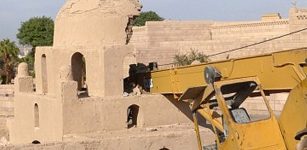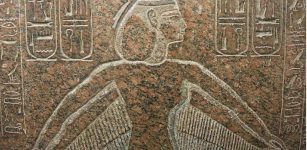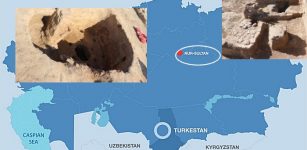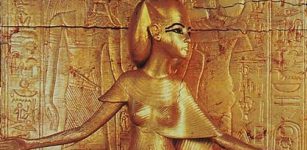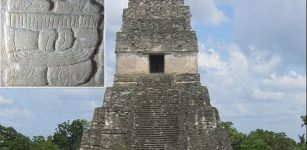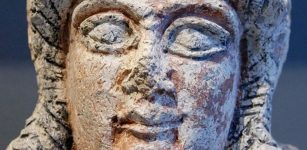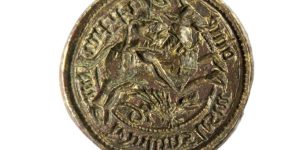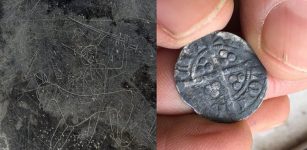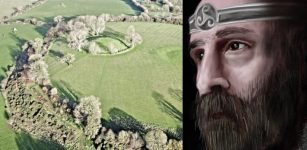Babylonian Conquest Of Jerusalem As Told In The Bible – Evidence Found In Mount Zion
Conny Waters - AncientPages.com - During excavations on Mount Zion in Jerusalem, archaeologists from the University of North Carolina at Charlotte, have found evidence of the Babylonian conquest of the city from 587/586 BC.
The discovery is important because it confirms a Biblical account of its destruction.
The team found a deposit including layers of ash, arrowheads dating from the period, as well as Iron Age potsherds, lamps and a significant piece of period jewelry - a gold and silver tassel or earring.
The unique mix of artifacts and materials found -- pottery and lamps, side-by-side with evidence of the Babylonian siege represented by burnt wood and ashes, and a number of Scythian-type bronze and iron arrowheads which are typical of that period.
"We know where the ancient fortification line ran, so we know we are within the city," Gibson said in a press release.
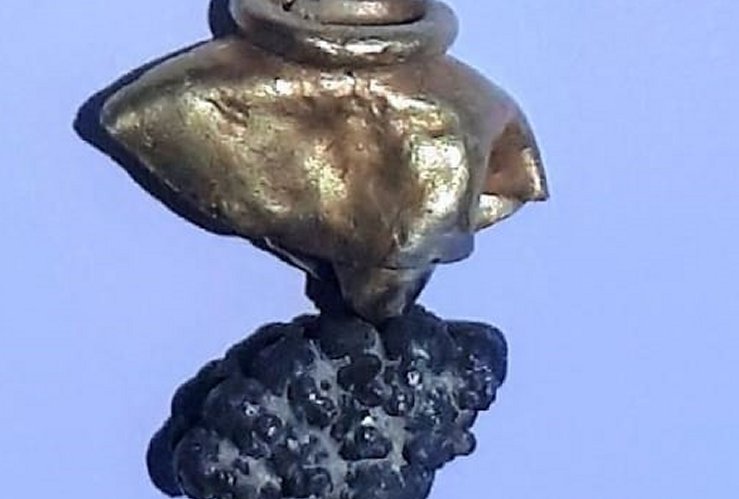 An earring or tassel ornament made from silver and gold, discovered at Mount Zion. Credit: Rafi Lewis/ Mt Zion Archaeological Expedition
An earring or tassel ornament made from silver and gold, discovered at Mount Zion. Credit: Rafi Lewis/ Mt Zion Archaeological Expedition
“We know that this is not some dumping area, but the south-western neighborhood of the Iron Age city - during the 8th century BCE the urban area extended from the "City of David" area to the south-east and as far as the Western Hill where we are digging."
"For archaeologists, an ashen layer can mean a number of different things," Gibson said.
However, in this case, the combination of an ashy layer full of artifacts, mixed with arrowheads, and a very special ornament indicates some kind of devastation and destruction. Nobody abandons golden jewelry and nobody has arrowheads in their domestic refuse."
"The arrowheads are known as 'Scythian arrowheads' and have been found at other archaeological conflict sites from the 7th and 6th centuries BCE. They are known at sites outside of Israel as well. They were fairly commonplace in this period and are known to be used by the Babylonian warriors.
“Together, this evidence points to the historical conquest of the city by Babylon because the only major destruction we have in Jerusalem for this period is the conquest of 587/586 BCE," Gibson said.
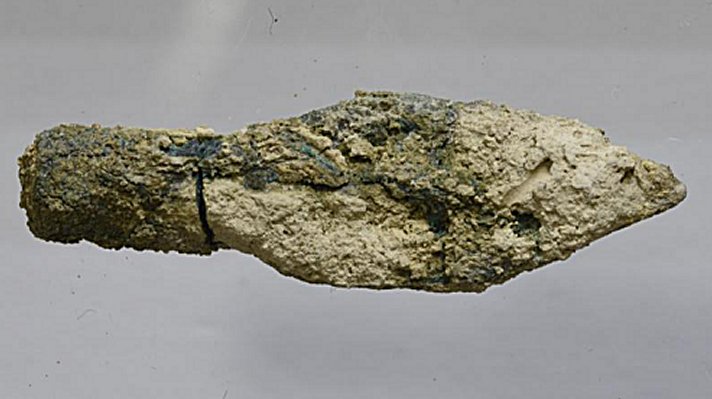 This is one of the Scythian type arrowheads found in the destruction layer from 587/586 BC. Credit: Mt Zion Archaeological Expedition/Virginia Withers
This is one of the Scythian type arrowheads found in the destruction layer from 587/586 BC. Credit: Mt Zion Archaeological Expedition/Virginia Withers
The clay artifacts also help date the discovery. The lamps, Gibson notes, are the typical high-based pinched lamps of the period.
"It's the kind of jumble that you would expect to find in a ruined household following a raid or battle," Gibson said.
"Household objects, lamps, broken bits from pottery which had been overturned and shattered... and arrowheads and a piece of jewelry which might have been lost and buried in the destruction."
"Frankly, jewelry is a rare find at conflict sites, because this is exactly the sort of thing that attackers will loot and later melt down."
"I like to think that we are excavating inside one of the 'Great Man's houses' mentioned in the second book of Kings 25:9," Gibson speculated.
"This spot would have been at an ideal location, situated as it is close to the western summit of the city with a good view overlooking Solomon's Temple and Mount Moriah to the north-east. We have high expectations of finding much more of the Iron Age city in future seasons of work."
The Babylonian conquest of Jerusalem (the lengthy Babylonian siege of the city) by the Neo-Babylonian king Nebuchadnezzar was violent and resulted in a great loss of life.
The Babylonian siege of Jerusalem lasted for quite a while even though many of the inhabitants wanted to give up. "King Zedekiah simply was not willing to pay tribute to Nebuchadnezzar and the direct result of this was the destruction of the city and the Temple", said Gibson.
Every year religious Jews in Jerusalem and across the world pray and fast in remembrance of the destruction of the Jewish Temple to God in Jerusalem, first by the Babylonians in 587/586 BCE, resulting in the exile of the inhabitants of the city to Babylon, and yet again in 70 CE at the hands of the Roman legions led by Titus.
To remember the devastating destruction of the Temple, Jews gather in synagogues around the world and at the Western Wall plaza in Jerusalem, to pray and mourn on Tisha B’ Av (the ninth day in the Hebrew month of Av) according to the Jewish calendar, which falls this year on Aug. 11.
Written by Conny Waters - AncientPages.com Staff Writer


